
Monthy Case Studies - 2003
Case #112 - July, 2003
A 56-year-old man occasionally eats medium-rare cooked fish. One evening the man felt something moving in his mouth and, after he extracted it, discovered that it was a worm. He visited his doctor to submit the worm for identification and because of gastrointestinal symptoms. An ova and parasites (O and P) stool exam was performed and the results were negative. Figure A shows an image of the entire worm taken without the aid of a microscope. The worm was cleared using lacto-phenol to allow visualization of internal morphologic structures. Figures B and C (40× magnification) show the anterior and posterior ends of the worm respectively. Arrows in Figures D and E indicate a key diagnostic structure observed in a cross-sectional sample. What is your diagnosis? Based on what criteria?
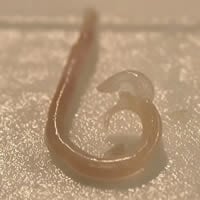
Figure A
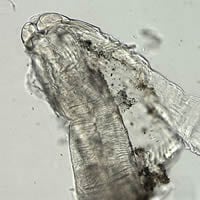
Figure B
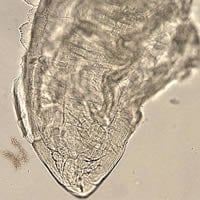
Figure C
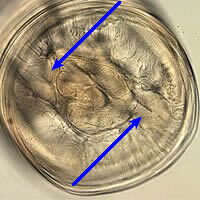
Figure D
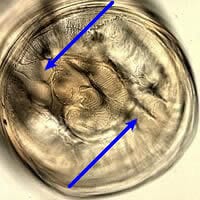
Figure E
Acknowledgement: This case was kindly provided by the Indiana State Department of Health.
Answer to Case #112
This was a case of anisakiasis, caused by either Pseudoterranova or Contracaecum. Diagnostic morphologic features included:
- the presence of three lips, characteristic of the ascarid nematodes.
- wide, butterfly-shaped lateral chords. The shape of the chords allowed for differentiation among the genera of ascarid worms. The lateral chords of Ascaris are relatively small and mound shaped and those of cod worms are large and either Y-shaped (Anasakis or Lagochilascaris) or butterfly-shaped (Pseudoterranova or Contracaecum).
- an absence of lateral alae were seen, ruled-out the possibility of this being Lagochilascaris.
More on: Anisakiasis
Images presented in the monthly case studies are from specimens submitted for diagnosis or archiving. On rare occasions, clinical histories given may be partly fictitious.
 ShareCompartir
ShareCompartir


